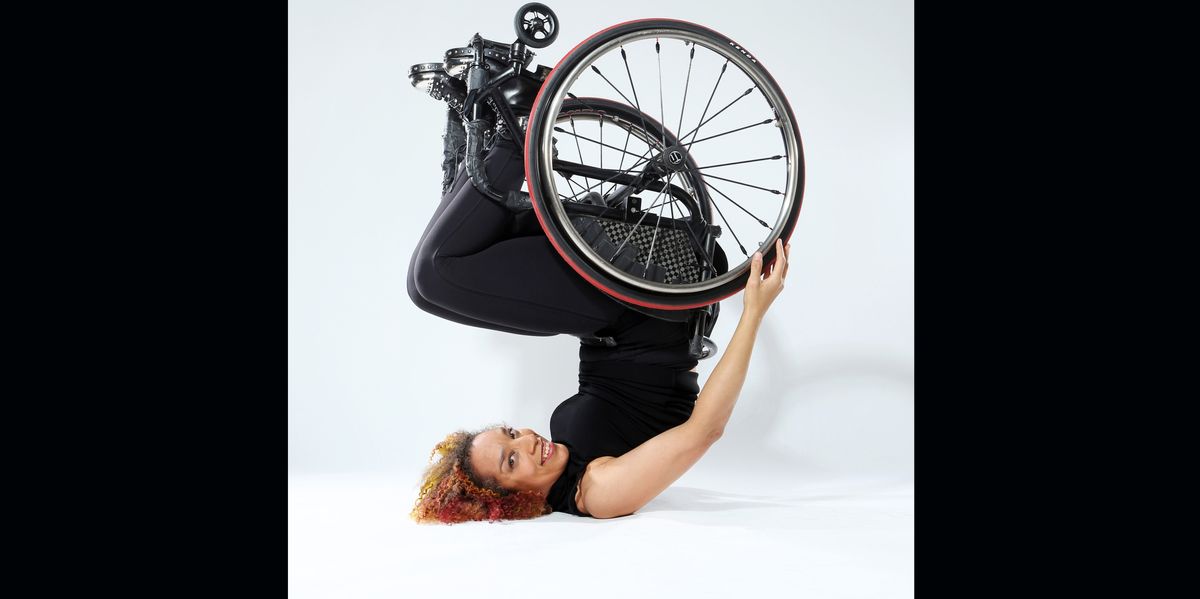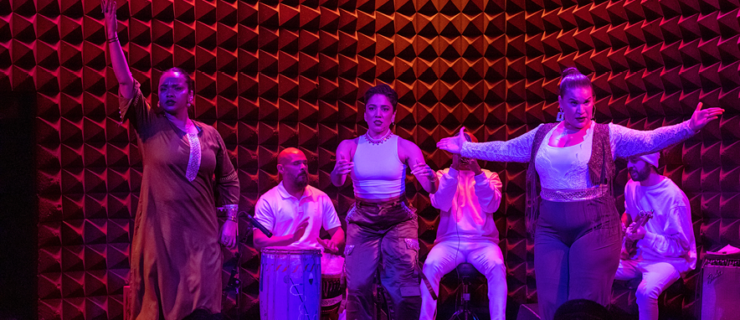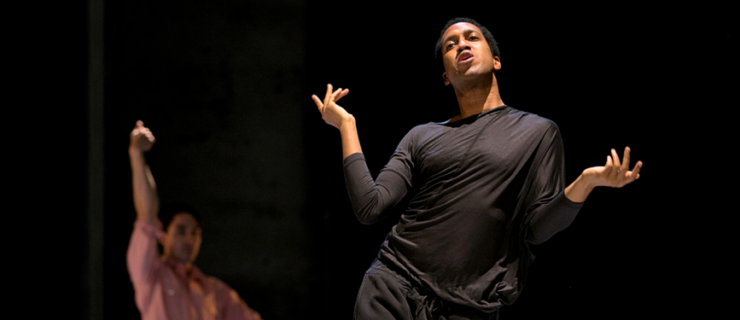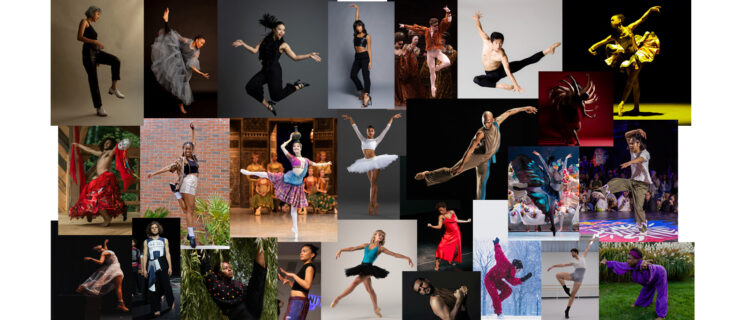Alice Sheppard Is Moving The Conversation Beyond Loss and Adversity
It can be hard to focus when Alice Sheppard dances.
Her recent sold-out run of DESCENT at New York Live Arts, for instance, offered a constellation of stimulation. Onstage was a large architectural ramp with an assortment of peaks and planes. There was an intricate lighting and projection design. There was a musical score that unfolded like an epic poem. There was a live score too: the sounds of Sheppard and fellow dancer Laurel Lawson’s bodies interacting with the surfaces beneath them.
And there were wheelchairs. But if you think the wheelchairs are the center of this work, you’re missing something vital about what Sheppard creates.
“Often for non-disabled audience members,” she says, “the work isn’t real until they see the chair.” Curious requests to know why Sheppard uses a wheelchair are telling of how disability typically traffics in the public imagination. “The movement and the art somehow challenge what they think is possible,” she says.
 Alice Sheppard photographed by Jayme Thornton for Dance Magazine
Alice Sheppard photographed by Jayme Thornton for Dance Magazine
Excellence in dance is often defined at the exclusion of disability. The idea of virtuosic performance involves dancers with precise technical control over each body part. The best dance, it’s often assumed, is performed by artists who are intensely able-bodied.
But Sheppard’s work models a truth that is rarely understood among dance audiences: Disability does not signify incompleteness. In fact, it offers novel pathways to several movement styles, each of them whole and generative of unique choreographic forms.
Disability Is A Creative Force
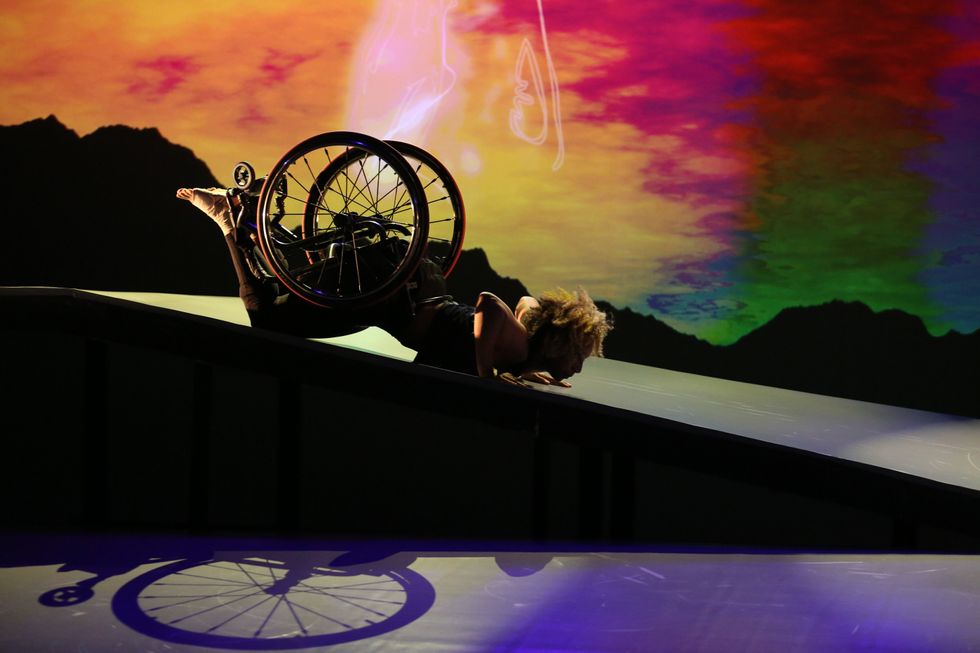
Alice Sheppard initially became a dancer to make good on a dare. It was 2004 and she was a professor in medieval studies at Penn State. During a conference on disability studies, she attended a performance by Homer Avila, a renowned dancer and choreographer who had lost one of his legs to cancer. Sheppard got to talking with him in a bar after his performance. He dared her to take a dance class. About a year after Avila died, she did—and shortly after resigned from academia.
What hooked Sheppard was a question that has motivated her work ever since: How can we move beyond questions of ability to culture and aesthetics? In popular culture, disability often stands in for a vague and generalized adversity. Sheppard wanted to find a radically different process.
“Disability,” Sheppard writes in her “Intersectional Disability Arts Manifesto,” “is more than the deficit of diagnosis. It is an aesthetic, a series of intersecting cultures and a creative force.”
After leaving academia, Sheppard began exploring the techniques of dancing in a wheelchair and learning how disability can generate its own movement. She trained, performed and toured with several physically integrated dance companies, including AXIS Dance Company, Infinity Dance Theater, Full Radius Dance and Marc Brew Dance Company.
Eventually, she launched the New York–based Kinetic Light, which has been invited to residencies at places like the prestigious Maggie Allesee National Center for Choreography and Gibney, and to perform at Jacob’s Pillow’s Inside/Out. She chose to form Kinetic Light as a production company rather than a dance company in an attempt to bring the work “outside of the arts bubble,” as she puts it on her website.
The Pursuit Of Wheel Joy

Sheppard and Lawson in DESCENT. Photo by Jay Newman
Intersectionality—a term that has become increasingly conspicuous in the dance world—is what activates Sheppard’s work from content to process. As a queer disabled woman of color, she makes dance that explores the multiple identities she inhabits. DESCENT, for instance, imagines a queer and interracial love affair between the mythical figures Andromeda and Venus, performed through the disabled bodies of Sheppard and Lawson.
In their wheelchairs, the dancers pursue what Sheppard often calls “wheel joy.” The pleasures of wheeled movement are palpable when the chairs produce beautifully tight and precise turns, often using inclined planes to harness momentum.
During one sequence, Sheppard lies downstage on her back. Lawson tips forward and launches over Sheppard as her wheels lift behind, her stomach resting on Sheppard’s shins. The dancers spread their arms and hold each other’s stare with intimate tension. Lawson’s wheels spin silently, each spoke catching the cool hues of the lights.
The movements do not represent the triumph over disability. They do not shore up myths about independence. And, even when Sheppard and Lawson dance without their wheelchairs, they do not scorn the wheelchair.
The intersectionality that drives Sheppard’s work also leads her to collaborate with other artists. To design the ramp for DESCENT, Sheppard tapped Sara Hendren, an artist and design researcher for the Accessible Icon Project, which seeks to dislodge the staid blue-and-white wheelchair symbol as the central iconography of disability. And Sheppard turned to Michael Maag, also a wheelchair user, to design the production’s intricate projection system.
Just as she dispenses with the notion that one’s identity can be simplified to just one thing, Sheppard dispenses with the idea that disability artistry must be produced by a sole pioneer. She stresses the interdisciplinary nature of disability art, and recognizes the lineage, influence and conversation amongst artists of the past and the present.
Making Dance Less Dependent on Sightedness
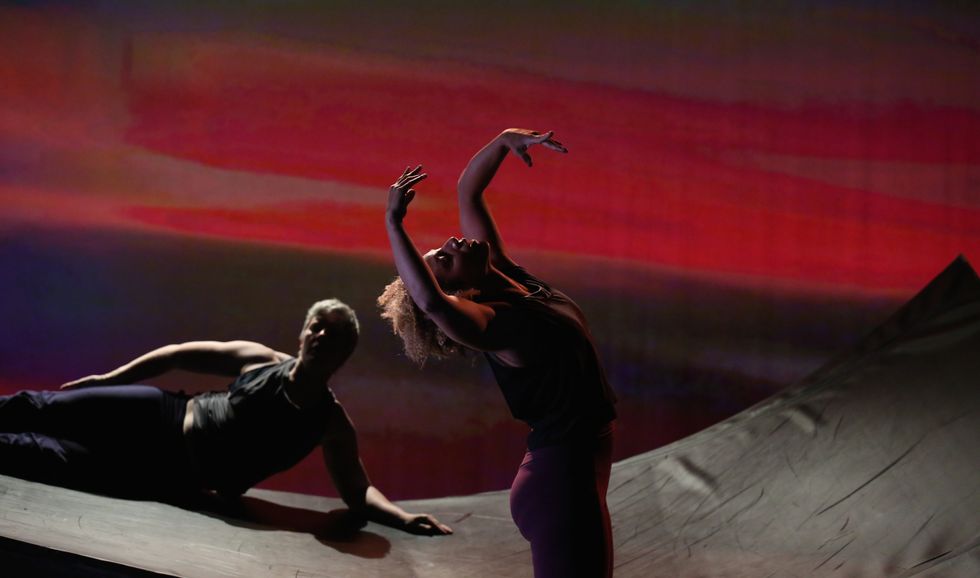
The team for Sheppard’s DESCENT wanted to think about how to decenter sightedness in the show. They were challenged by some of their blind audience members to think beyond current practice in access for nonvisual audience members.
In response, they began developing an app called Audimance. Designed by Lawson, who is also a product designer and user interface architect, it translates movement into a sonic experience with multiple content streams, including poetry and sonic renderings of dance alongside traditional audio description.
“Expert listeners can choose where to focus,” says Lawson. Audimance will be released as an open-source app that others in the dance field can use to make their work accessible.
It’s Time To Acknowledge The Many Disabled Artists Making Work

Alice Sheppard wants to lift the entire field for disabled artists. Photographed by Jayme Thornton for Dance Magazine
When I ask her how she feels about the attention disability is getting within the dance field today, Sheppard isn’t sure. “It’s too often the case that disabled artists are thought of as exceptional,” she says. “Maybe two or three artists get lifted, but everyone else gets ignored.”
Sheppard dreams of a broad and sustainable landscape for disabled artists. And she works closely with several organizations seeking to make the arts more inclusive. She sits on the Disability. Dance. Artistry. Task Force, a key initiative of Dance/NYC that gathers resources and publishes research about disability equity in the arts. The advocacy efforts are numerous—from accessible training and venue access to funding and curatorial literacy in disability aesthetics—and Sheppard is a powerful presence in the work.
It’s not the shine of a single star that Sheppard counts as success. It’s the brilliant glow of a constellation of artists growing together that she imagines.
